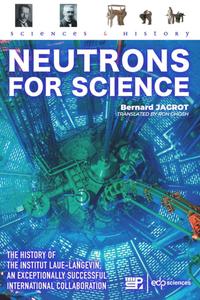
Free Download Neutrons for science: The history of Institut Laue-Langevin, an exceptionally successful international collaboration by Bernard Jacrot
English | PDF | 2021 | 209 Pages | ISBN : N/A | 9.9 MB
In 1967, France and Germany agreed to cooperate on the construction and commissioning of a nuclear reactor dedicated to research in physics, chemistry and biology. Thus was born the Institut Laue-Langevin, a project whose aim was to provide research scientists with an extremely intense source of neutron beams, a fundamental tool for probing the mysteries of matter. Britain soon joined the project, followed gradually by other countries both from western and eastern Europe, making the Institut Laue-Langevin a particularly successful example of European cooperation. This success is a clear illustration of how, by joining forces and skills in this way, it was possible to provide scientists from "the old continent" with the means to tackle ambitious projects by giving them the best neutron source in the world.
In 1967, France and Germany agreed to cooperate on the construction and commissioning of a nuclear reactor dedicated to research in physics, chemistry and biology. Thus was born the Institut Laue-Langevin, a project whose aim was to provide research scientists with an extremely intense source of neutron beams, a fundamental tool for probing the mysteries of matter. Britain soon joined the project, followed gradually by other countries both from western and eastern Europe, making the Institut Laue-Langevin a particularly successful example of European cooperation. This success is a clear illustration of how, by joining forces and skills in this way, it was possible to provide scientists from "the old continent" with the means to tackle ambitious projects by giving them the best neutron source in the world. Neutrons for Science tells the story of the beginnings of this project and shows how, with the right organisation, it was possible to optimise the use of the reactor. The book also paints the portraits of three eminent figures, Jules Horowitz, Heinz Maier-Leibnitz and Louis Néel, who played a key role in this success. In this English edition, a chapter has been added covering the period 2004-2018 in order to create a link with the modern era and highlight the dynamism that has marked the Institute since it was founded.
